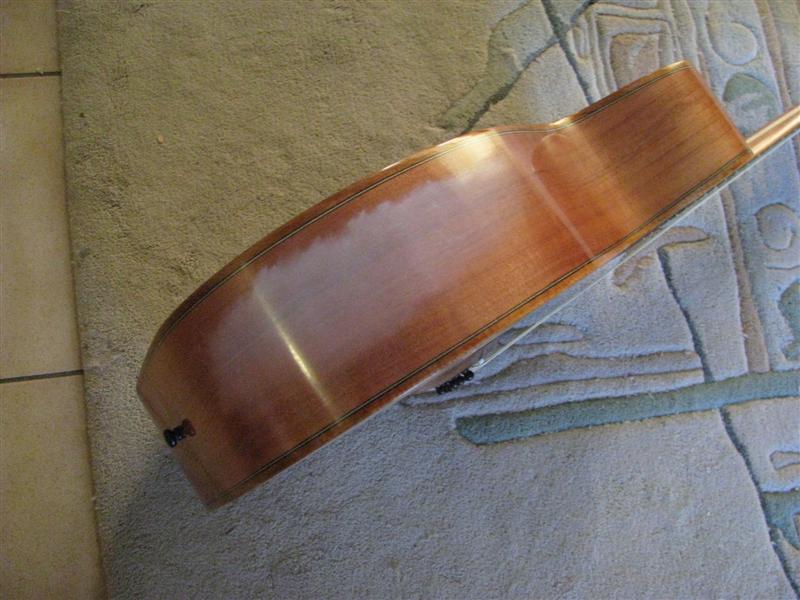It's finished with Hard Shellac (version 1) which shows no signs of crazing.
It was delivered in September 2007 so I guess the finish was applied in July of that year.
The owner noticed the discolouration after he started playing it standing up and using a strap (in the last couple of months).
So the affected area is in close proximity to his right armpit.
I jokingly asked him if he'd been drinking a lot of Vodka, but I think it's a combination of perspiration and/or deodorant. Maybe the shellac doesn't like aluminium chlorohydrate.
Anyone got any other theories?
Whichever, it's going to get re-finished with pre-cat laquer.

